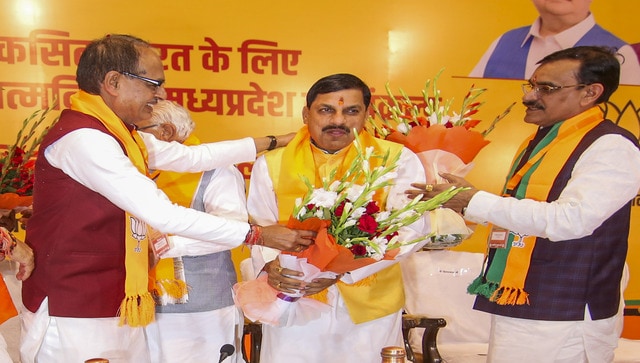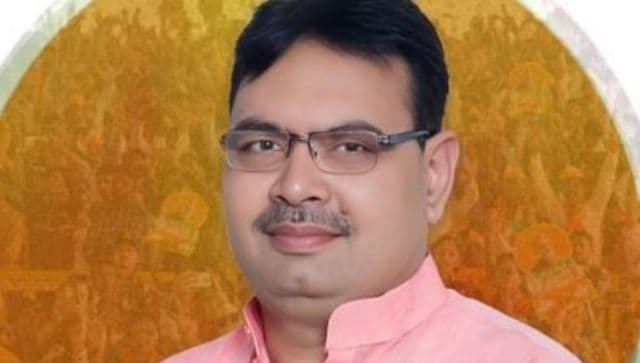The BJP has done it again. On Tuesday, the saffron party picked first-time MLA Bhajanlal Sharma as the Chief Minister of Rajasthan. The surprise choice was announced after BJP MLAs met and elected the 56-year-old legislator from Sanganer as the leader of its legislature party. He is at present a Rajasthan BJP general secretary. Diya Kumari and Prem Chand Bairwa will be the deputy chief ministers and Vasudev Devnani the speaker of the state Assembly. This comes on the heels of the BJP springing a surprise by choosing Vishnu Deo Sai and Mohan Yadav as the chief ministers of Chhattisgarh and Madhya Pradesh. Meanwhile, big names like Vasundhara Raje and Shivraj Singh Chouhan have been left by the wayside. But why has the BJP picked new faces in the Hindi heartland? Let’s take a closer look: Chhattisgarh As per a piece in the Economic Times, while many have been surprised by the BJP’s choices, the picks line up with the BJP’s 2024 game plan to balance caste and class dynamics. The pick of Sai – a tribal leader in Chhattisgarh – for example, reveals the BJP’s intent to appeal to tribal voters both in the state and its neighbours of Madhya Pradesh, Jharkhand, and Odisha. A piece in NDTV pointed out that while the party could have picked an OBC CM its dominant showing in tribal-dominated seats paved the way for its pick.
The piece also argued that Sai was chosen with an eye to prepare a “cross-border campaign platform” ahead of 2024.
It noted that Madhya Pradesh and Jharkhand have a tribal population of around 22 and 26 per cent respectively. [caption id=“attachment_13488952” align=“alignnone” width=“640”] Vishnu Deo Sai has been a sarpanch, a multiple-time MLA and MP, BJP’s state president and a Union Minister. PTI[/caption] Meanwhile, tribal communities comprise around 23 per cent in President Droupadi Murmu’s home state of Odisha. “Picking Mr Sai as the Chief Minister in Chhattisgarh allows the BJP to project itself as a tribal-friendly face in these states before the 2024 polls. These four combined have 75 Lok Sabha seats, of which 20 are reserved for tribal communities that, in dozens more, are a key vote base,” the piece noted. Madhya Pradesh As per Economic Times, the BJP chose Mohan Yadav in Madhya Pradesh with an eye on wooing Yadav voters in Uttar Pradesh and Bihar – states crucial to the party’s 2024 ambitions. “The BJP’s delicate balancing act also involves appointing deputy chief ministers from different communities, including a Dalit and a Brahmin,” the piece noted. The NDTV article also argued that Yadav being chosen is an indication of the BJP paying attention to the two crucial states that will send 120 MPs to the Lok Sabha. “Essentially, if the BJP were to sweep these two states (and assuming it continues to dominate the Hindi heartland), there is realistically little the Opposition can do to prevent a third term for Mr Modi,” the piece argued. A piece in Hindu Business Line stated that history seems to have repeated itself as Prime Minister Narendra Modi and Union Home Minister Amit Shah once again did not pick the leader of a prominent caste in a state to become chief minister. [caption id=“attachment_13491632” align=“alignnone” width=“640”]
 Mohan Yadav will replace Shivraj Singh Chouhan as the Madhya Pradesh CM. PTI[/caption] “This started with Devendra Fadnavis, who was asked to become for the first time Mahrastra CM in October of 2014, ignoring Maratha claimants from within the party. Around the same time, the strategy was successfully repeated in Haryana with Manohar Lal Khattar, a non-Jat leader, asked to spearhead the state,” the state argued. The outlet quoted sources as saying that the BJP via its choice is also trying to convey that it will not brook factionalism ahead of the 2024 polls. Rajasthan The Economic Times piece pointed out Bhajanlal Sharma, the party’s choice in Rajasthan is close to the RSS – the BJP’s ideological fountainhead – as well as its national chief JP Nadda. “While the BJP’s practice of choosing leaders based on caste and community affiliations is not novel, the current selections indicate a strategic move towards a broader regional spread of different communities and castes. These decisions, which impact the composition of leadership in three crucial states, underscore the party’s meticulous planning to consolidate support ahead of the 2024 elections,” the piece noted. The piece also argued that the BJP is attempting to send a message that everyone in the party has an equal shot at rising through the ranks. [caption id=“attachment_13495392” align=“alignnone” width=“640”]
Mohan Yadav will replace Shivraj Singh Chouhan as the Madhya Pradesh CM. PTI[/caption] “This started with Devendra Fadnavis, who was asked to become for the first time Mahrastra CM in October of 2014, ignoring Maratha claimants from within the party. Around the same time, the strategy was successfully repeated in Haryana with Manohar Lal Khattar, a non-Jat leader, asked to spearhead the state,” the state argued. The outlet quoted sources as saying that the BJP via its choice is also trying to convey that it will not brook factionalism ahead of the 2024 polls. Rajasthan The Economic Times piece pointed out Bhajanlal Sharma, the party’s choice in Rajasthan is close to the RSS – the BJP’s ideological fountainhead – as well as its national chief JP Nadda. “While the BJP’s practice of choosing leaders based on caste and community affiliations is not novel, the current selections indicate a strategic move towards a broader regional spread of different communities and castes. These decisions, which impact the composition of leadership in three crucial states, underscore the party’s meticulous planning to consolidate support ahead of the 2024 elections,” the piece noted. The piece also argued that the BJP is attempting to send a message that everyone in the party has an equal shot at rising through the ranks. [caption id=“attachment_13495392” align=“alignnone” width=“640”] Bhajanlal Sharma was chosen as the new Chief Minister of Rajasthan on Tuesday.[/caption] “The move is likely to strengthen the party cadre with the belief that any party worker will be elevated based on performance,” the Economic Times piece concluded. The NDTV piece also said Sharma’s selection in Rajasthan allows the BJP to avoid the dreaded curse of anti-incumbency “He is a (brand) new face and fits the bill as an upper caste leader. And, as with the other two states, it seems he was picked with a weather eye on next year’s election,” the piece argued. With inputs from agencies
Bhajanlal Sharma was chosen as the new Chief Minister of Rajasthan on Tuesday.[/caption] “The move is likely to strengthen the party cadre with the belief that any party worker will be elevated based on performance,” the Economic Times piece concluded. The NDTV piece also said Sharma’s selection in Rajasthan allows the BJP to avoid the dreaded curse of anti-incumbency “He is a (brand) new face and fits the bill as an upper caste leader. And, as with the other two states, it seems he was picked with a weather eye on next year’s election,” the piece argued. With inputs from agencies


)

)
)
)
)
)
)
)
)



